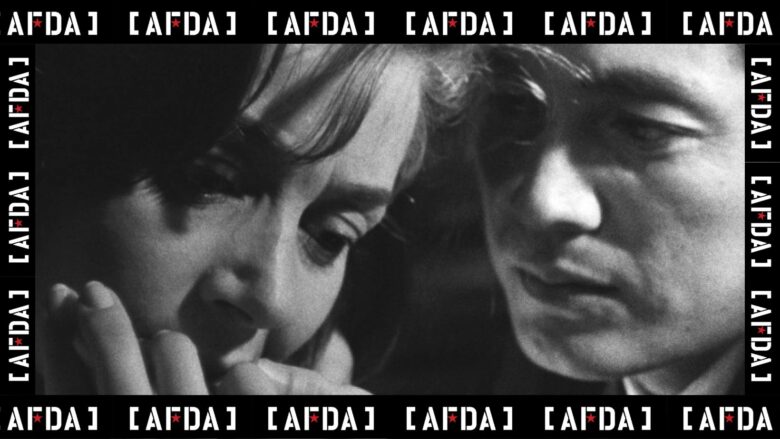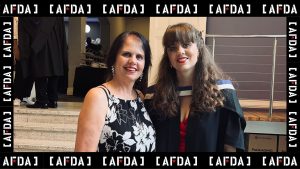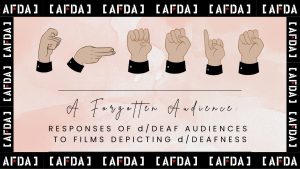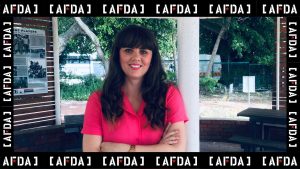As part of my Honours studies at AFDA, I had to write a 3,000 word narrative forms analysis based on the film Hiroshima, Mon Amour (1959).
*
HIROSHIMA, MON AMOUR
Narrative Forms
Vicki Fourie
“Narratology isn’t just about what’s being told—it’s about how it’s told and why it resonates.” (Crawford, M., 2024) When we look at the fabula and syuzhet of the story – two of the most important forms of storytelling concepts – we get a better grasp of narrative and how stories are told. Both these terms originated as part of the Formalism movement and theory in early 20th-century Russia. (Petrov, 2010) Fabula in a film structure focuses on the bare necessities of the story, the events, and the way they play out, whereas syuzhet in a film is how the film-maker chooses to tell the story. Simply put, fabula is the story, and syuzhet is the structure.
In the case of Hiroshima, Mon Amour (Alain Resnais), a French romantic drama film, the narrative storytelling is done in a compelling, creative way. The fabula and the syuzhet are not done in synchronizing chronological order; instead, it’s done in an asynchronous form. The structure (syuzhet) is still chronological, but the flashbacks (fabula) – which are the very essence of this story – are told out of sequence.
Horishima, Mon Amour (1959) starts with a series of close-ups of intimate moments between two lovers. At first, ash falls on them, which is a burning metaphor for Hiroshima. Then, their skin glows like golden dust. Finally, it changes form and becomes sweat on naked skin; now it’s an erotic moment.
“The purpose of this opening montage… is to establish the binary opposition of reconstruction and deconstruction; of love and hate; of memory and forgetfulness,” writes Eli Solt. (Solt, n.d.)
Voice-over narratives kick-start the film, which is candid, and transparent. A man and a woman are conversing, but we don’t yet know who they are. At first, it sounds like they are simply discussing the aftermath of what happened in Hiroshima with the devastating atomic bombing of 1945. Is this a documentary film? It could be, for Resnais – the film’s director – previously directed Night & Fog (1956), a documentary that focused on the Holocaust during World War Two. (Lopate, 2003) But Hiroshima, Mon Amour is not supposed to be a documentary, but a romantic drama film instead…
The film then abruptly cuts to a hospital, which is cold, clean, and clinical. We don’t know whose flashback this is, or if it is indeed a flashback. Then just as abruptly, we are back into that intimate moment between two lovers. The film cuts again, this time to a museum that showcases the aftermath of the atomic bomb. This contrast shows the divide between still life and the current life between the two lovers. We get the sense that the filmmaker wants us to see that the two lovers still have their perfect bodies, privately intertwined with each other, but in this museum, life has been taken apart and shattered, broken pieces are put in glass cases, on display for the whole world to see.
‘You saw nothing in Hiroshima,’ the man tells the woman in the voice-over. The devastation of the atomic bomb is far too great a scale to simply describe it in words or to showcase in photos.
But the photos are still shown – broken and destroyed bodies, hair falling out, crippled hands, deformed babies, infertile men. The rain caused panic, fishermen died, and the Pacific turned deadly overnight. Food was also poisoned. The aftermath of Hiroshima is evident. “192,020 (is the) total number of those killed in Hiroshima, combining those killed instantly and those killed from radiation and other aftermath.” (Hall, 2013)
All this is then likened to flowers in the field by the woman narrator. We are back in the intimate moment between the two lovers, close-ups of the woman clutching her nails into the man’s back. Only thirteen minutes into the film, the woman narrator tells us, ‘An entire city will be lifted off the ground, then fall back to the earth in ashes.’
Love affairs can be beautiful and/or devastating. ‘Devour me,’ the woman says. ‘Devastate me.’ Is she talking about her affair or Hiroshima? Or rather, is she talking about both?
Three minutes later, we finally see the narrators’ – and lovers’ – faces. The man is Japanese, and the woman is French. The man wasn’t in Hiroshima when the bomb was dropped, but his family was. He was off fighting in the war when it happened, however. She is in Hiroshima because of work. She’s working on a film that’s being shot in Hiroshima. He asks her why she is there. ‘It interests me. I have my own idea about it… Looking closely at it, is something that has to be learned.’ She wants to look and look again. She doesn’t want to avert her eyes to the disaster that happened in that city.
In the next scene, she is walking outside on a patio, basking in the sunlight. Wearing only a bathrobe, she drinks a cup of coffee. She looks into the sun before going back to her room. He is now asleep in her bed and his finger twitches. She sees it, we see it, and then we are taken to a flashback into her life. A memory of another man dying on a dirt road, and his finger also twitches. This flashback happens in a matter of mere seconds. But we know this is important information, for the woman is visibly upset and her mood has changed drastically. But then she quickly brushes it off and tries to put it in the back of her mind. This is where the fabula and syuzhet components first come into play sensitively, and it’s beautiful to watch. Because the filmmaker chose to show this flashback first, we get a sense that information is being held back essentially and vitally. It compels us to watch a little longer; this is not simply just a love story.
“The abrupt way in which the film uses montage and flashbacks reveal a lack of concern with narrative linearity and a focus on the emotional deconstruction and understanding after such an immensely traumatic event,” writes Eli Solt in his aptly titled essay “Challenges of representing historical memory in Hiroshima, Mon Amour.” (Solt, n.d.)
Are there more flashbacks coming? And will the flashbacks in this film happen chronologically? We have no sense of time, or where all these scenes are taking place. The filmmaker does this on purpose and with a plan, as he wants us to fully engage with the emotional components that go with it. Time and dates are not so important right now.
We are back in the lovers’ room. The man tells the woman that he is an architect and he is ‘into politics.’ The woman is an actress who is starring in a film ‘about peace.’ Finally, the couple leaves the apartment. They leave Hotel Hiroshima together, and they start talking about life before the war. The conversation is dripped with regret and sadness.
‘What was this madness of yours in Nevers like?’ he asks her. Nevers is where she comes from, which is a small town in France.
‘Madness is like intelligence… it comes over you, consumes you, and then you understand,’ she explains. ‘But when it’s gone, you no longer understand it.’
‘Were you full of hate?’ he asks.
‘That was my madness… All I cared about was hating’ she says.
She is an actress, and we are invited to go on set with her. We see actors and extras covered with fake burns and wounds. It’s like we are transported back to the dark days after the atomic bombing. The actress is sleeping under a tree, with a cute white cat next to her. Her Japanese lover walks over to her. She is leaving tomorrow, and it’s her last day in the country. He wants something more out of her, but she’s holding back. She changes the topic to the weather. ‘It’s supposed to rain tonight.’
When they meet each other again, it’s in the man’s house. ‘Where is your wife?’ she asks him. ‘In the mountains. I’m alone,’ he explains. During this conversation, we come to know that they are both happily married to their spouses. They kiss again. It’s a love affair, and they end up in bed together again.
‘The man you loved during the war… was he French?’ he asks her afterward.
‘He wasn’t French… It was in Nevers,’ she answers.
The asynchronous use of fabula and syuzhet is shown here again. A second flashback shows the same man in a uniform. In the first flashback, this soldier was dying. Now he’s alive. Why is the filmmaker jumping between timelines? We see another flashback, this time she’s cycling through the idyllic countryside. We see a close-up of the soldier observing her on her bicycle.
‘At first, we met in barns, then in among the ruins. Then in rooms…’ It looks like she is going to tell her story chronologically, but then she suddenly jumps to the end of the story: ‘… then he died.’ We are missing certain elements of the story, but this is done on purpose so that the mystery remains. She is a mystery, and her life and story are a mystery. She will unravel her brokenness layer by layer, and she will take all the time she needs.
Forty-three minutes into the film, her Japanese lover asks her questions again about this season in her life, and she gets agitated and shouts, ‘Why do you keep asking about Nevers?!’
We’re getting the sense now that war has devastated these two lovers’ inner lives, just like how the atomic bomb devastated the outer lives of Hiroshima’s residents. These two lovers are connecting on a physical and emotional level because of the war. They are now in the devastating aftermath of it, the eerie quietness that comes after it.
The narrative gives us a little backstory now. The two are now dressed and sitting in a restaurant. She shares how she was born and grew up in Nevers, where the population is 40,000. There are flashbacks to this little town. But then out of nowhere, we see her in a cellar, madly clawing her nails against the rocky walls. It’s a desperate scene, and her hair is also cut to the roots. It looks like she is hiding in the cellar – or did someone put her there? We are not sure, for the non-linear narrative used here has become confusing. Why is she in the cellar? She was in love, but the lover also lay dying on the road. There are more questions now, and no answers have been given – yet.
We then find out that she was disgraced because of her relationship with this soldier. Flashbacks and snapshots of her punishment are shown onscreen. Unsettling music plays in the background and she stares at the ceiling. Then we are back in the restaurant again, gentle, soft music playing in the background. It’s a stark contrast designed to make us dizzy about where exactly we are in the story.
‘I was so young once!’ she exclaims.
The camera traces her hand as she leans forward across the table, and combs her fingers through her lover’s hair. We see a flashback of her alone in bed and her head of messy, short hair. ‘My hair grows back. I can feel it in my hands, day by day. I don’t care.’ The narrative now heads down an unclear path. She is uncertain of where she is in her story, and her past, present, and future are blurring into one singular narrative.
Dylan Caskie states the following in his 2018 Honours thesis: “Hiroshima, Mon Amour blurs the border between past and present — they seem to coexist at once. Time throws off the reins of narrative structure and denies the film’s protagonists any opportunity to exist with a clear identity in a clear temporal setting.” (Caskie, 2018)
She then shares how she was disgraced and outcast because of her relationship with the German soldier. Her father’s pharmacy also closed down due to the sins she committed against her nation. Skillfully, the camera shows her walking around her room at home, shock and anguish spread across her face. There are no words needed here, no narrator telling us the story, for we all know. Trauma and grief is what follows. We see her in the cellar again.
By now, we notice the pattern in these fabula and syuzhet flashbacks: she started off her story where she was in the summer of her life – in love with a man. Then suddenly winter, when she was thrown in the cellar and shunned from society. Then her bedroom, where she lost her mind and madness found her. Then the final part of the story: the soldier dying and the getaway they had both planned together. There is no chronological timeline here, but that is what memories are really like. Triggers bring them up in random sequences at random times in our lives.
She thought she had long forgotten about what had happened in Nevers all those years ago. The trauma of this young soldier’s death has made her unable to discern between his dead, cold body and hers as he lay dying on the dirt road. ‘It seemed to be one and the same,’ she shares. ‘He was my first love.’
‘Then one day it was warm… my hatred left me. I don’t scream anymore. I became reasonable,’ she tells her Japanese lover. ‘Does your husband know this story?’ her Japanese lover asks her. ‘Non,’ she replies in French. He gets up and hugs her. ‘I’m the only one who knows.’ Elatedly, she hugs him back, relieved that she finally told someone her story. ‘Tell me more,’ he asks. ‘I’ll think of this story as the horror of forgetting.’
Dylan Caskie continues to state in his 2018 Honours Thesis, that “in Hiroshima, Mon Amour, memories blur the line between past and present. Because of this, both space-time specificity and identity become ambiguous — time renders the lovers unrecognizable.” (Caskie, 2018)
At the beginning of the film, the Japanese man told her that he had first seen her in a café the previous night, and he had been fascinated by how bored she had looked. But this woman is anything but boring, for she is multi-layered, complex, and shattered in her being. Through this film’s narrative, we can look into her world and view life from her realities. We will never experience what she’s experienced, but we get a taste of it. That’s the power of skillful narrative films.
They leave the restaurant, and she goes back to the hotel alone. But she’s not ready yet to be alone. She walks up and down the hallway, and then goes to the bathroom to wash her face. ‘You think you know, but no. Never,’ she says out loud to herself and no one in particular. ‘In her youth, in Nevers, she had a German love,’ she says out loud, finally coming to terms with her story, ‘We’ll go to Bavaria, my love, and we’ll get married. She never went to Bavaria.’ How this story ended is now accepted as reality.
Things are coming to a full circle now. She met her first love at the age of 20 and then got married to someone else. Now she’s having an affair with someone in Hiroshima. She feels that she is still cheating on her first lover. He has been dead for fourteen years. We start to realize that this film is a thoughtful look at what trauma is, and how it affects us as human beings. We as viewers are now active participants, for we know that human beings are complex, and the layering of the visual and auditory cues brings us to that awareness.
This realization makes her storm out of her hotel room, and back on to the streets. She waits outside the Japanese lover’s house, uncertain of where she’s supposed to go and what she’s supposed to do. ‘Stay in Hiroshima’ he tells her when he sees her. She wants to stay, but she also wants him to leave her. She is caught up with her past, present, and future. How can she walk away from her past, when it’s still very much part of who she is? They walk together in the deserted streets, and eventually, she walks alone again. ‘Time will pass… Only time. And a time will come… when we can no longer name what it is that binds us.’ Is she talking about herself, or the city called Hiroshima?
Her Japanese lover tries one last time to convince her to stay in Hiroshima, but she feels it’s time to leave. It’s time to move on… She describes her town, Nevers, to him. We see the fabula and syuzhet flashbacks again. ‘I’d like to see Nevers again,’ she says. This is surprising, for at the beginning of the film she was adamant that she never wanted to go back again. Has she finally healed and accepted her past? Is she finally making peace with her past?
The sun rises, and her time in Hiroshima has finally come to an end. It’s time to go home – Paris or Nevers, we don’t know. Her Japanese lover follows her to the restaurant, and then to her room. She wants him to leave her. He holds her face in his hands. She gives him a heartbreaking look and says, ‘Hiroshima is your name.’ He replies, ‘And your name is Nevers… Nevers in France.’
“The merging of Hiroshima and Nevers at the end of the film is a complex interpretive problem… The film seems deeply concerned with trying to figure out a way to articulate a form of healing… The fact that the narrative ends with indecision further hints at the Hiroshima tragedy’s lingering effects decades later and the notion that we really have no idea how to reconnect after this kind of devastation.” (Solt, n.d.)
By the end of the film, we come to the realization that this story was never about places or cities, and it was never a love story. Rather, it is a study of a man and a woman and the aftermath of war they carry in their hearts.
*
BIBLIOGRAPHY
Crawford, M. (2024). What Is Narratology In Film & Literature? The Heart Of Storytelling. [online] Filmmaking Lifestyle. Available at: https://filmlifestyle.com/what-is-narratology/ [Accessed 25 May 2024].
Petrov, P. (2010). Fabula/Sjuzhet. The Encyclopedia of Literary and Cultural Theory. https://doi.org/10.1002/9781444337839.wbelctv1f001.
Hiroshima, Mon Amour. (1959). [Feature Film] Cocinor.
Lopate, P. (2003). Night and Fog. [online] The Criterion Collection. Available at: https://www.criterion.com/current/posts/288-night-and-fog.
Night and Fog. (1956). [Documentary Short Film] Argos Films.
Hall, M. (2013). By the Numbers: World War II’s atomic bombs – CNN. [online] CNN. Available at: https://edition.cnn.com/2013/08/06/world/asia/btn-atomic-bombs/index.html.
Solt, E. (n.d.). Hiroshima Mon Amour Essay. [online] Eli Solt. Available at: https://www.elisolt.com/hiroshima-mon-amour-essay.
aspectfilmjournal.web.unc.edu. (n.d.). Dylan Caskie- Couples Lost in Time: Hiroshima, mon amour and L’Eclisse | Aspect: Journal of Film and Screen Media. [online] Available at: https://aspectfilmjournal.web.unc.edu/2021/12/dylan-caskie-couples-lost-in-time-hiroshima-mon-amour-and-leclisse/.




Comments
Pingback: AFDA | Birthday Month | June 2024 – VICKI FOURIE